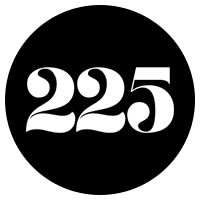
Ramos Gin Fizz is classic New Orleans, but did Baton Rouge make it first?
By Clarke J. Gernon Jr., special to 225
In the summer of 1935, U.S. Sen. Huey P. Long conducted an impromptu cocktail training course on the Ramos Gin Fizz with reporters at the New Yorker Hotel. The event made news across the country, partially because Long had brought along a bartender from the Roosevelt Hotel in New Orleans to make sure the cocktail was prepared perfectly.
While the now-famous Ramos Gin Fizz is one of New Orleans’ signature cocktails, the drink actually has some surprising origins that are more Capitol City than Crescent City.
|
|
Henry Carl Ramos, born in Indiana and reared in New Orleans, took a job tending bar at the Sumter House in Baton Rouge around 1881. As presented in a series of advertisements and reports in The Daily Capitolian-Advocate beginning Jan. 19, 1882, the then-25-year-old Ramos soon opened his own establishment, Capitol Saloon, in early 1882.
Ramos found space for the saloon in a building on Lafayette and Laurel streets next to the Tessier Building. Within a few months, he was already hiring more mixologists, including his brother William to keep up with the demand of the saloon’s many imbibers.
As business steadily grew, Ramos opened a second location in early 1886 at the Mayer Hotel at the corner of Lafayette and Main streets. In spite of his success in Baton Rouge, or perhaps because of it, Ramos sold the Capitol Saloon in late 1886 and returned to New Orleans. Within a few months, he and his brother would open the Imperial Cabinet Saloon on Carondelet Street, and later, the Stag Saloon on Gravier Street.
The Gin Fizz was first advertised as a specialty at these locations. It’s said that Carl would assemble the drink then hand the cocktail shaker to one of a veritable army of young bartenders, who would shake it for the next 12 minutes to achieve the perfect foam for this silvery drink.
The success of the Ramos establishments continued until the summer of 1919, when Prohibition forced him to seek another line of work. After his death and the end of Prohibition, the Ramos family leased their secret recipe to the Hotel Roosevelt as the “Original and Only Ramos Gin Fizz,” thus solidifying its reputation as a New Orleans cocktail.

Most accounts suggest the cocktail was created around the time the Imperial Cabinet Saloon opened, which fits in nicely with the narrative of New Orleans as the birthplace of many a famous drink. But the origins of this cocktail are firmly planted in downtown Baton Rouge—and they even reach back to the days before the Capitol Saloon.
In the late 1800s, Louisiana’s Vice Consul to France, Phillip Machet, was also a retail liquor dealer with a store and warehouse on Lafayette Street near Laurel. The Capdevielle family, which owned the building that housed the Capitol Saloon, has stated that Machet concocted a gin drink similar to the Ramos Gin Fizz at his store to help sell his merchandise. The mixture of gin, cream, egg white, lemon juice and soda water became quite popular, but Machet was in business to sell liquor, not serve it.
According to the book Lift Your Spirits, published by LSU Press earlier this year, Machet and Ramos became friends while Ramos was employed at the Sumter House. When the Capitol Saloon opened, Machet gave his friend and downtown neighbor the gin cocktail recipe in an effort to stop folks from hanging around his store for hours. Of course, Machet also got a new customer out of the deal.
Some claim the first Ramos Gin Fizz as we know it may have been served at the Capitol Saloon.
While there is no doubt the Ramos Gin Fizz made it into the pantheon of great New Orleans cocktails, it just might have been a product of several opportunists who came together on the streets of downtown Baton Rouge.
So the next time you order a Ramos Gin Fizz, you might also be drinking in some of Baton Rouge’s tasty history.
Clarke J. Gernon Jr., is a principal at Remson Haley Herpin Architects and president of the Baton Rouge Blues Foundation.
Sources: Famous New Orleans Drinks and How To Mix ‘Em by Stanley Clisby Arthur, Lift Your Spirits by Elizabeth M. Williams and Chris McMillian, advertisements and reports from The Daily Capitolian-Advocate
|
|
|

